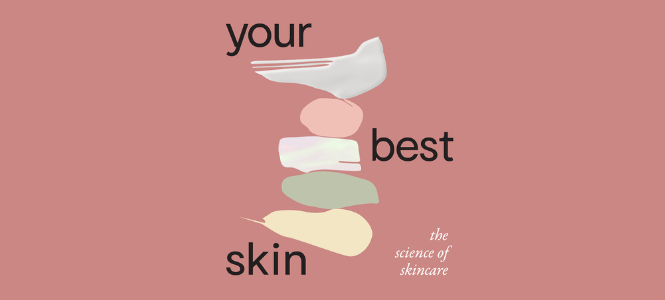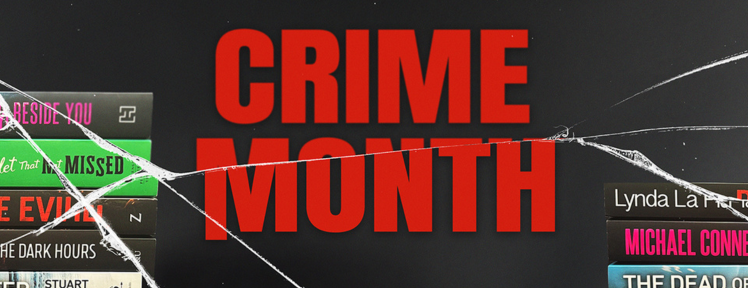Hannah English is a beauty writer and content creator with a background in pharmaceutical research. An enthusiastic communicator, she has built a niche within the beauty industry around her passion for making science feel cool, relevant and accessible. Like many teens, Hannah grew up with acne and low self-esteem, with few scientific solutions made available to her. This is what led her to study pharmaceutical science and today, she shares everything she knows to make sure her experience as a young person is one of the past. Armed with this knowledge and her razor-sharp view on the wider beauty and skincare landscape, Hannah is peeling back the label to reveal the truth, educate and help everyone to best understand and protect the skin they’re in.
Today, you can read a Q&A with Hannah English, plus an extract from Hannah’s very first book — Your Best Skin: The science of skincare! Read on …

Hannah English
Meet Hannah!
Please tell us about your book, Your Best Skin!
HE: Your Best Skin is a guide to the skincare basics. It’s a jargon-free look at skincare as a self-care ritual, and the science that underpins it. There are quizzes, flowcharts, ingredient explainers, and example routines to help you find the best skincare for your needs. Because skincare is never going to be one-size-fits-all.
Why did you want to write this book?
HE: I care very deeply about providing access to information about skincare for everyone. It can be overwhelming, the industry is hard to navigate, and sometimes we come across messaging that’s not exactly kind to us. Unkind about breakouts, about what we choose to eat, about the inevitable lines we’ll all see on our skin at some point… so every week, I sit down and answer skincare questions. I see science questions, practical questions, product recommendation questions. I wanted to write a resource that’s easy to access, easy to navigate, unbiased, and above all, caring.
Can you talk us through what informs your approach to skincare?
HE: I’d love to! There’s a lot going on here. I studied pharmaceutical science, so there’s this detailed knowledge of biology that underpins it all – when I see terminology like ‘inflammation’, for example, or ‘free radicals’ – I covered that at university, I wrote assignments on it, I assessed medical data on it later in my career.
I’m also not a particularly … patient person when I shop, so I’m immediately exasperated if I see a word salad for a product description, or worse, a product that promises the earth. Then, while my studies and career were happening, I had a pretty serious mental health situation. For years. It took much longer than it should have to figure out what was going on with me. It was excruciating, truly, but having experienced that, there’s a lot of compassion in what I do.
Facts and figures are great, but beauty is both an art and a science and there must be room for everyone to feel comfortable, for the ritual of it all. I’m sick of beauty making us all feel bad. That’s not what I do.
‘Your skin’s health is just biology, it doesn’t have a moral value of ‘good’ or ‘bad’. If it’s doing its job of keeping your organs in and the environment out, then it’s great! Anything else is the cherry on top.’
What is one thing everyone can do right now to benefit their skin?
HE: Wear sunscreen every single day. Don’t think about it, just do it. No days off. There are lots of recommendations in the book for you!
What do you love the most about doing what you do?
HE: I get messages from people who are not only wearing sunscreen daily now, but they’ve converted their family and friends. It lights me up every time! Not only is it fabulous for your skin from a vanity perspective, but it’s proven to reduce the risk of skin cancer.
What was your favourite part of the writing process for Your Best Skin?
HE: Apart from literally writing a chapter on sunscreen, free from myths and misinformation, I learned a lot about myself and what I can do. My neurodivergence is a disability, and writing a whole book would be a daunting task for anyone.
I really built it up in my head to be this … monolith, this huge thing that had to be perfect, and I’m very proud of what we created but that’s no way to approach a task. You just don’t get anything done; you freeze up from the pressure. So I had to force myself to actually start writing and once that happened, I went into a flow and it came together. That flow state, when you’re in it, it’s incredible. I relaxed into it, I’m a better writer because of it, and I know myself and what I can do with the right support systems in place.
What do you hope readers will discover in Your Best Skin?
HE: If you take one thing away, I hope it’s that your skin’s health is just biology, it doesn’t have a moral value of ‘good’ or ‘bad’. If it’s doing its job of keeping your organs in and the environment out, then it’s great! Anything else is the cherry on top.
And finally, what’s up next for you?
HE: Having just formulated my first product (Rebound by Hannah English for TBH Skincare), I’ve really enjoyed the process of collaboration and using my science skills in practice; I’d love to work on more product formulations. I’ll find new ways of helping people to explore their relationship with their skin and to feel educated about skincare as a whole — who knows where that might lead!
I’ll also take a long holiday somewhere warm, with a cute hat and lots of sunscreen, of course.
Thanks Hannah!
 An extract from Your Best Skin!
An extract from Your Best Skin!
Chapter 9: How to read a skincare label
Do you read the ingredients of your skincare products? I love to, but I’m probably in the minority here. I want to share what I know so you can be better equipped to assess whether or not a product will do what it promises to do.
First of all, I need you to say this out loud: the dose makes the poison. Say it again. Out loud. Let’s use alcohol as an example – pure ethanol. Alcohol is great for disinfecting at 60–70% concentration and regularly used in clinics before skin-piercing treatments, such as microneedling. If the concentration is higher, the bacteria know to go dormant to protect themselves. If it’s lower, it won’t be enough to kill them. In skincare, products containing alcohol will be at a concentration much lower than 60–70% and the alcohol is usually there to thin out the formula or to help the formula deliver its ingredients to where they need to go in your skin.
See? The dose makes the poison.
The basics
What you can tell from an ingredients list:
— If it contains specific ingredients that are known to do what the product claims to do. I’ll often scan the active ingredients when investigating a product. For example, if a product claims to ‘brighten’ skin, I might expect to see vitamin C or niacinamide. If it’s for sensitive, compromised skin, I don’t like to see lots of fragrant plant oils like lavender or geranium. They’re not bad for everyone with sensitive skin, but they make me itchy.
— Roughly how much of an ingredient is present. As mentioned before, the dose makes the poison. Some ingredients, such as alcohol, get a bad rap but have their uses. Alcohol is a great penetration enhancer and largely evaporates before it sinks into your skin. It’s also found in Dr Dennis Gross’s fabled Alpha Beta Peel Pads (good luck prying them from my cold, dead hands). Alcohol can be drying at high concentrations, so you wouldn’t want a hydrating product like a moisturiser to be 50% alcohol, but 1% would be fine to help dissolve another ingredient. Use your common sense and best judgement.
— If it contains allergens or ingredients you don’t like. Check for allergens if you have any allergies or ingredients you don’t enjoy for whatever reason much like the ingredient list for food.
What you can’t tell from an ingredients list
It’s like cake. You can look at the ingredients all you like but you won’t know how it tastes until you try it. The same goes for the effects of skincare products.
Ingredients list guidelines
There are guidelines for how ingredients are listed on personal care products.
— They must all be named according to the INCI (International Nomenclature of Cosmetic Ingredients), an international standard that ensures ingredients are called the same thing worldwide. For example, the INCI name for green tea is ‘Camellia sinensis leaf extract’.
— Everything must be listed in order of quantity. If it’s first on
the ingredient list, it is the most abundant ingredient. However, this is not true for South Korean products.
— The top five ingredients make up the majority of the mixture, so you can sometimes get a feel for the texture of the product with only this information.
— Many ingredients are effective at very low concentrations so more does not always mean better. Peptides, for example, are effective at very small concentrations – parts-per-million small!
— Once you get down to 1% or less, ingredients can be listed
in any order, so brands will sometimes list the most exciting ingredients first.
— Perfume/parfum/aroma is exempted from listing full ingredients as they’re considered a trade secret; however, known irritants do need to be listed.
Once you’re across this info, it’s about recognising which ingredients do what and that takes time and practice.
Use INCI Decoder to decode ingredient lists. Search for products or photograph/copy and paste ingredient lists to get a breakdown of what the ingredients do. The website also categorises products by ingredient.
Ingredient categories
Here are some common ingredient categories that you might come across in your skincare products.
| CATEGORY | WHAT DOES IT DO? |
| Preservative | Preservatives help to prevent growth of bacteria and mould products. Some commonly used safe and effective preservatives include phenoxyethanol, methylparaben, potassium sorbate, benzoic acid, chlorphenesin and caprylhydroxamic acid. Some products use sterile packaging instead of preservatives. |
| Solvent | Solvents are ingredients that dissolve other ingredients. Water is a solvent for sugar or salt. Alcohol is another example of a solvent, as well as propylene glycol which is used in many applications for its moisturising action. |
| Chelating agent | Chelating agents react with metal ions and prevent them from reacting with our skin or products, to keep things stable. There are metal ions in water (especially hard water, which makes it challenging for skin and hair) and other skincare ingredients such as iron oxide pigments. Metal ions can sometimes help bacteria to grow so chelating agents can make preservatives work better. |
| Buffer | Buffers are used to adjust the pH of skincare products. For example, it can ensure a moisturiser is not too acidic. |
| Surfactant | Surfactants break surface tension. They enable oil and water to mix in order to cleanse oil from skin, create a foam, make lipids and water-soluble ingredients sit nicely in a moisturiser without separating, and help deliver ingredients into your skin. Some are kinder to skin than others. |
| Emulsifier | An emulsifier is a type of surfactant that helps mix things together that wouldn’t otherwise mix. Its job in personal care products is to stabilise the oil and water phases so the product doesn’t separate. It’s very important that oil and water don’t separate, especially in sunscreens, which must form an even film of UV filter to adequately protect skin. |
If you’re having issues with a skincare product, note what’s on the ingredient list in case you run into the same issue with another product later. Knowledge is power.
—This is an edited extract from Your Best Skin by Hannah English, published by Hardie Grant Books. Limited signed copies available while stocks last!

Your Best Skin
Limited Signed Copies Available!
Your Best Skin is your essential skincare manual, breaking down the science of your skin in a friendly, trustworthy and accessible way.
Pharmaceutical scientist and beauty writer Hannah English takes an unbiased, science-backed dive into everything you need to know about caring for your skin, as she destigmatises skin conditions and asks us to stop blaming...






 What do we know about the Boy Swallows Universe Netflix show?
What do we know about the Boy Swallows Universe Netflix show?  Booktopia’s top thrilling fiction picks for Crime Month
Booktopia’s top thrilling fiction picks for Crime Month  Booktopia’s Top First Nations Book Recommendations for 2023
Booktopia’s Top First Nations Book Recommendations for 2023
Comments
No comments